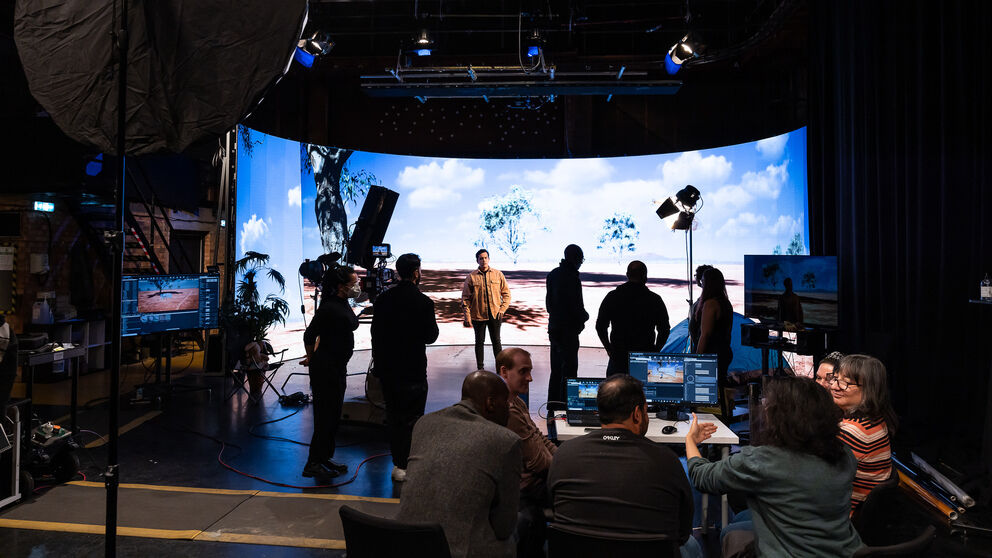The combination of Unreal Engine and LED volume stages has taken virtual production to another level, but have skillsets kept pace? IBC365 learns more about the UK’s first dedicated certificate in virtual production.
The use of CGI in film and television production has moved from being a long, slow process undertaken in the postproduction stage involving shooting in greenscreen studios and actors emoting to a ‘tennis ball on a stick’ to an interactive environment that allows performers, directors, and cinematographers to see and move through computer generated environments in real-time. Alan Thorn, a video games industry veteran runs the Virtual Production Course at the National Film and Television School (NFTS) in the UK. The course offers the industry’s first dedicated certificate in Virtual Production.
Virtual production (VP) merges real-time CGI with traditional filmmaking techniques using giant LED walls and systems originally designed for use in video games such as Unreal Engine, to create immersive environments that seamlessly blend the physical and digital worlds. As Thorn explains, the industry is in need of professionals who can navigate this complex, hybrid landscape...
You are not signed in
Only registered users can read the rest of this article.

Poacher turned gamekeeper: Netflix rules for now
Netflix raids Hollywood to land a giant of old media, but having paid billions over the odds for ageing IP, would a smarter play have involved the creator economy?

Truth in the age of deepfakes: Building trust in the human-machine era
As deepfakes become prevalent throughout the media industry, experts at the BBC, Guardian, and ITN wrestle with the implications of today’s unprecedented levels of disinformation and distrust.

Rory Peck Awards: Truth has never needed its defenders more
This year’s Rory Peck Awards was an affirmation that press freedom is in severe danger, that it has become a vicious fight to sustain that facts matter. George Jarrett reports.

Camerimage: “The time to be afraid of AI was two years ago”
The festival of cinematography remains political with the rise of AI and gender equality bubbling beneath the surface.
.jpg)
Content Everywhere: Disruptive forces in 2025, from AI to ROI and SGAI
Looking back over 2025 to date, it’s clear that AI continues to widen its role in the Content Everywhere ecosystem, and many companies are becoming more discerning about how and where the technology should be applied to streaming and video technology. Clearly, there is still much more to come, and much more to learn, but what have recent developments taught the industry to date?



.jpg)
.jpg)